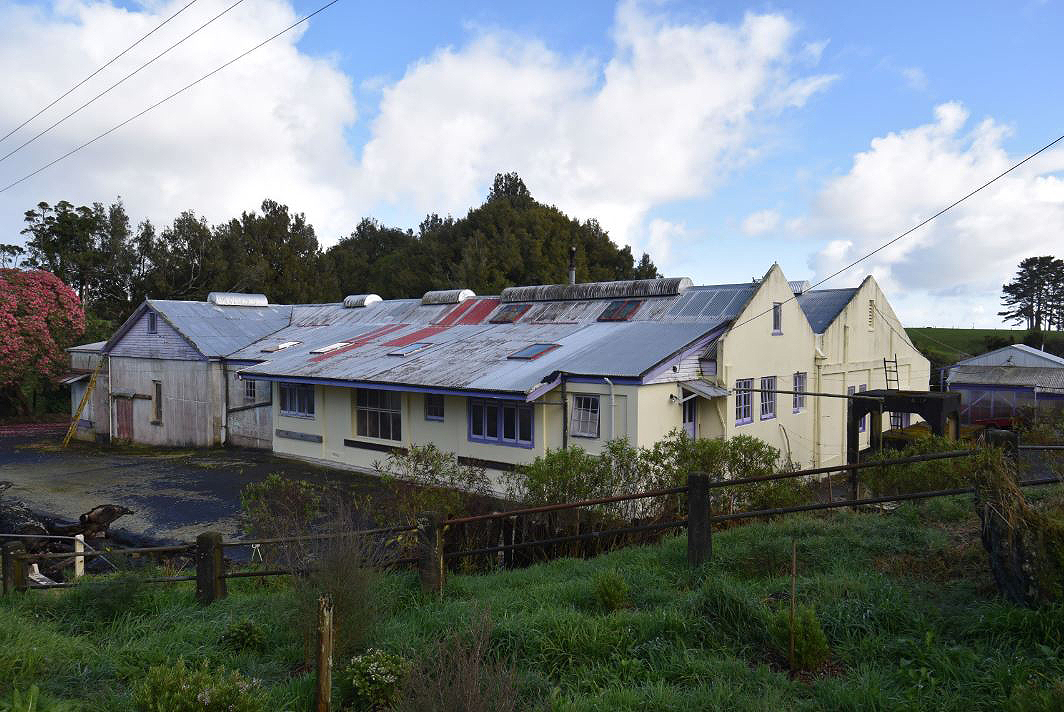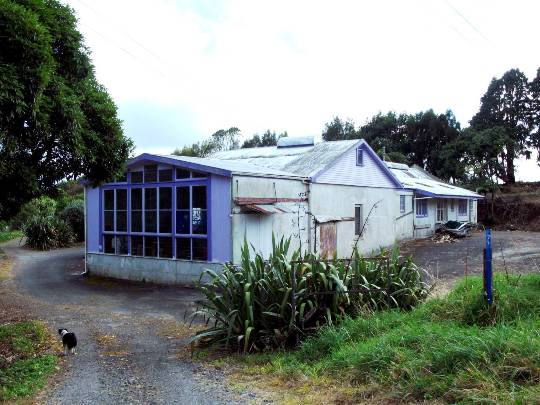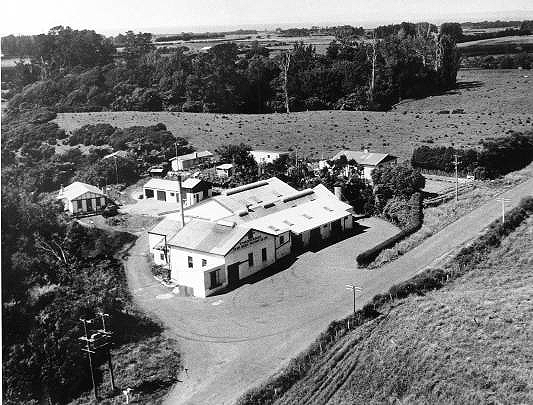The Tikorangi Dairy Factory (Former) in northern Taranaki is a gabled industrial building dating from 1897. After serving its original function until 1963, it became a residence and workplace for acclaimed photographer and activist Fiona Clark in 1975. The factory is of architectural, historical, and social significance. It is an important reminder of the centrality of the dairy industry in Taranaki and is a remnant of the national trend towards cooperative dairy companies, whose organisational structures meant contributing farmers were also shareholders. Modified during its working life to accommodate new machinery and product processing, the factory reflects the industry’s twentieth-century growth and willingness to adopt new technology. The factory assisted Tikorangi’s development and was a hub of social interaction. Little altered since its closure, the factory’s value is further strengthened through its successful reuse and association with Clark, ‘a socially concerned photographer’ whose work demonstrates how photography can be a source of empowerment for marginalised people. Tikorangi is within the rohe of Ngāti Mutunga and Te Ātiawa. Four of the eight hapū of Ngāti Mutunga occupied the area extending from the coast inland along the Waitara River, and are descendants of Tukaweriri, Hineweo, Te Ito, Uenuku, and Hineno. Te Ātiawa is one of several tribes descended from Awanuiarangi, the son of Rongoueroa and Tamarau-te-heketanga-a-rangi. Evidence of Māori occupation near what became Tikorangi includes the remains of Awa-te-Take pā. Organised Pākeha settlement of Taranaki began in 1841 and it was efforts to acquire land that ultimately caused war to break out in 1860. Māori land in Taranaki was confiscated in the 1860s and a government-led policy of settlement began. Tikorangi, initially regarded as ‘a dreary waste of fern land and tutu’, was settled by North Taranaki volunteers who were allocated land in 1865. Dairy farming formed the basis of Taranaki’s economy from the 1880s, with the region being climatically and topographically suited for this industry. Sources suggest Tikorangi’s dairy factory started operation in the mid-1860s and by 1886 occupied ‘a small wooden building with very primitive appliances’. Situated beside a large stand of Puriri trees and close to the springs of the Parahaki Stream meant a supply of fresh water. The Tikorangi Co-operative Dairy Company was formed in 1895. Many of Taranaki’s early timber factories were destroyed by fire and it is believed that Tikorangi’s met this fate, and was rebuilt in 1897. The earliest dairy factories were typically timber, but concrete was more commonly used from the early 1900s. Vast development and growth in the industry necessitated improvements at Tikorangi, with those completed in 1934 being ‘so extensive as to practically give the company a new factory’. Changes included a spacious making room with skylights and bullnose ridge ventilation, three stages, and a freezing chamber for butter. The ‘up-to-date’ and ‘splendid factory’ could double its output, and its community value is evidenced by 300 people attending the reopening ceremony. Improvements in transport, infrastructure and technology, however, led to dairy cooperatives entering a series of amalgamations, resulting in the formation of the nationwide company Fonterra in 2001. The Tikorangi Company ceased operations in 1961 and the former factory was sold several times prior to being acquired by Clark. Finding the large concrete spaces to be cold, Clark replaced sliding delivery doors with windows on the front elevation and lives in the smaller spaces in winter. The former freezing chamber is Clark’s darkroom, with the thick walls ensuring a constant temperature, and the former salt room is a store and printing room. Concerning her photography, Clark has stated her ‘intent is to give people a voice’, especially those not usually included in New Zealand’s visual record, including the gay, lesbian and transgender community. Her photography also documents protests against the exploitation of natural resources and efforts by Te Ātiawa to preserve traditional fishing grounds. The building’s original and current uses both contribute to the building’s significance, and they are intertwined. Clark has found ‘[s]ome days it still smells like milk. You’re always reminded of its history.’



Location
List Entry Information
Overview
Detailed List Entry
Status
Listed - Review Application Received
List Entry Status
Historic Place Category 2
Access
Private/No Public Access
List Number
7128
Date Entered
12th December 1993
Date of Effect
12th December 1993
City/District Council
New Plymouth District
Region
Taranaki Region
Extent of List Entry
Extent includes part of the land described as Lot 1 DP 5144 (RT TN132/218), Taranaki Land District, and the building known as Tikorangi Dairy Factory (Former) and the attached tank stand thereon. Extent does not include other structures such as the workers’ tearoom, garages, and factory manager’s cottage.
Legal description
Lot 1 DP 5144 (RT TN132/218), Taranaki Land District
Stay up to date with Heritage this month
